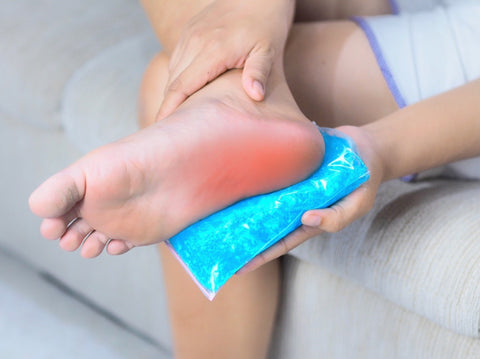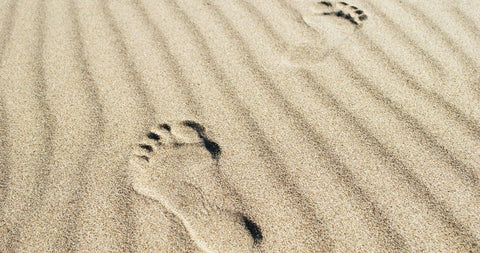
How to relieve sore feet and foot pain
Ankle pain
Ankle pain has many causes, but if you’ve recently upped your activity levels, you may have tendonitis. The condition occurs when tendons on the outside of your ankle become inflamed or torn because of increased pressure from repetitive activity. Another cause could be a sprained ankle, which can vary in severity. If you aren’t sure what’s causing your ankle pain, make an appointment to see your GP.1,2
In the meantime, you can ease the pain yourself by trying the below:3
Do…
- Rest and raise your ankle often
- Apply an ice pack in a towel on your ankle for up to 20 minutes every two to three hours
- Wear wide-fitting, comfortable shoes with a low heel and soft sole
- Use insoles like Scholl Orthotic pain relief insoles
- Wrap a bandage around your ankle for extra support
- Gently stretch your ankles
Don’t…1
- Walk or stand for long periods
- Wear high heels or narrow pointy shoes.
Heel pain
Heel pain is often caused by exercising too much or wearing tight-fitting shoes. It varies from sharp shooting pains to red swollen dull aches. If you are experiencing sharp pain between your arch and heel that is made worse by walking, you could have plantar fasciitis. If the sharp pain is more sudden and accompanied by an injury, you may have a fracture or ruptured Achilles tendon.
Pain in the ankle, heel and calf when standing on tiptoes could indicate Achilles tendonitis, while any redness, swelling and dull aching could be caused by bursitis. It’s always best to make an appointment to see your GP to confirm the cause of the pain.1,2
In the meantime, you can ease the pain yourself by trying the below:4
Do…
- Rest and raise your heel often
- Apply an ice pack in a towel on your ankle for up to 20 minutes every two to three hours
- Wear wide-fitting, comfortable shoes with a low heel and soft sole
- Use heel inserts like Scholl Orthotics Heel Pain Relief insoles
- Wrap a bandage around your heel and ankle for extra support
- Gently stretch your ankles and feet
Don’t...
- Walk or stand for long periods
- Wear high heels or narrow pointy shoes.
Pain on the bottom of the foot
Whether you’re experiencing discomfort in the ball, arch or sole of your foot, there are many possible causes. It could be that you’ve simply sprained a muscle or ligament, or that plantar fasciitis is causing you shooting pains in between your arch and heel. If you have flat feet, you probably have something called over-pronation which is when your foot rotates inwards when your heel touches the ground, gradually flattening the foot to misalign joints. It’s always best to make an appointment to see your GP to confirm the cause of the pain.
In the meantime, you can ease the pain yourself by trying the below:
Do…
- Rest and raise your foot often
- Apply an ice pack in a towel on your ankle for up to 20 minutes every two to three hours
- Wear wide-fitting, comfortable shoes with a low heel and soft sole
- Use insoles like Scholl Orthotics Arch Pain relief
- Try losing weight if you are overweight
- Gently stretch your feet
Don’t...
- Walk or stand for long periods
- Wear high heels or narrow pointy shoes.
Pain in the ball of the foot
Pain in the ball of the foot is extremely common and often associated with highly active people and wearing badly fitting shoes. The shape of your foot, for example having high arches or small curled up toes, can put added pressure on the ball too. Other causes include bunions (a hard bony lump on the outside of the big toe), bursitis (swelling with a dull aching pain), a sprained metatarsal (a torn or stretched ligament) and Morton’s neuroma (a damaged or irritated nerve in the foot). It’s always best to make an appointment to see your GP to confirm the cause of the pain.1,2
In the meantime, you can ease the pain yourself by trying the below:5
Do…
- Rest and raise your foot often
- Apply an ice pack in a towel on your ankle for up to 20 minutes every two to three hours
- Wear wide-fitting, comfortable shoes with a low heel and soft sole
- Use insoles like Scholl Orthotics Arch Support
- Try to lose weight if you’re overweight
- Gently stretch your toes and feet
Don’t...
- Walk or stand for long periods
- Wear high heels or narrow pointy shoes.
